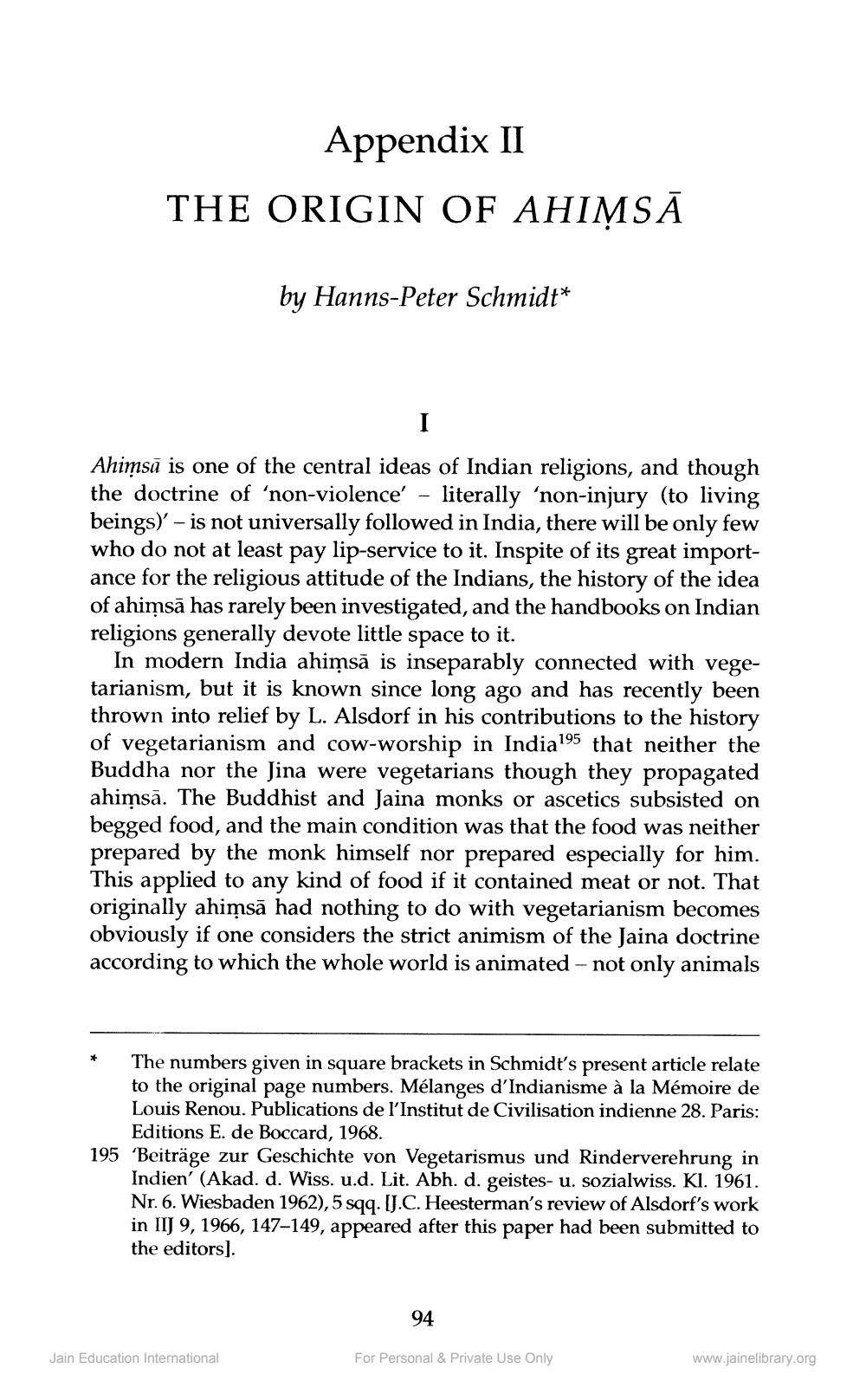________________
Appendix II THE ORIGIN OF AHIMSĀ
by Hanns-Peter Schmidt*
Ahimsā is one of the central ideas of Indian religions, and though the doctrine of 'non-violence' - literally 'non-injury (to living beings) – is not universally followed in India, there will be only few who do not at least pay lip-service to it. Inspite of its great importance for the religious attitude of the Indians, the history of the idea of ahimsā has rarely been investigated, and the handbooks on Indian religions generally devote little space to it.
In modern India ahimsā is inseparably connected with vegetarianism, but it is known since long ago and has recently been thrown into relief by L. Alsdorf in his contributions to the history of vegetarianism and cow-worship in India 195 that neither the Buddha nor the Jina were vegetarians though they propagated ahimsā. The Buddhist and Jaina monks or ascetics subsisted on begged food, and the main condition was that the food was neither prepared by the monk himself nor prepared especially for him. This applied to any kind of food if it contained meat or not. That originally ahiņsā had nothing to do with vegetarianism becomes obviously if one considers the strict animism of the Jaina doctrine according to which the whole world is animated - not only animals
The numbers given in square brackets in Schmidt's present article relate to the original page numbers. Mélanges d'Indianisme à la Mémoire de Louis Renou. Publications de l'Institut de Civilisation indienne 28. Paris:
Editions E. de Boccard, 1968. 195 'Beiträge zur Geschichte von Vegetarismus und Rinderverehrung in
Indien' (Akad. d. Wiss. u.d. Lit. Abh. d. geistes- u. sozialwiss. Kl. 1961. Nr. 6. Wiesbaden 1962), 5 sqq. (J.C. Heesterman's review of Alsdorf's work in IIJ 9, 1966, 147-149, appeared after this paper had been submitted to the editors).
94
Jain Education International
For Personal & Private Use Only
www.jainelibrary.org




